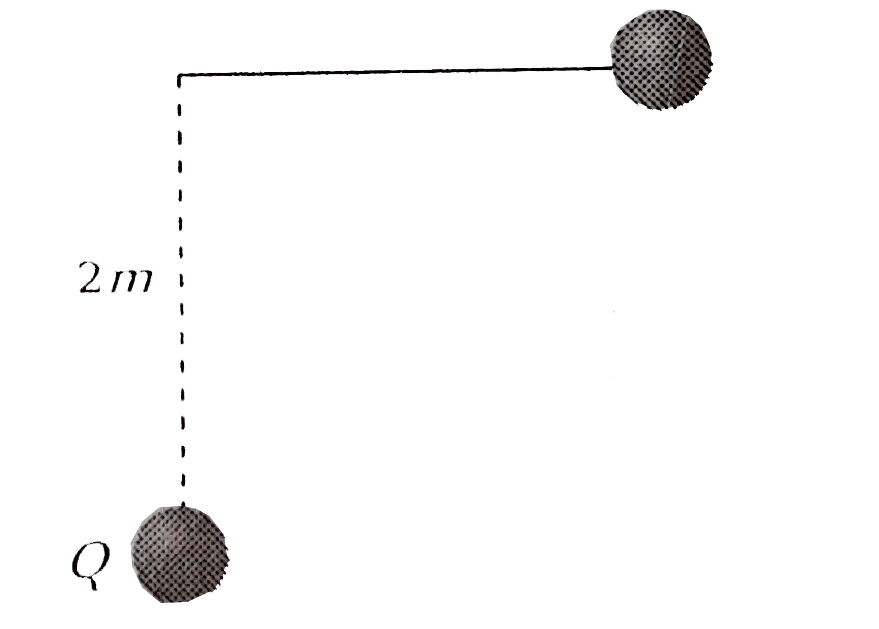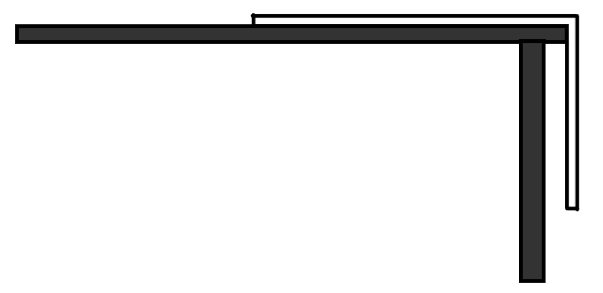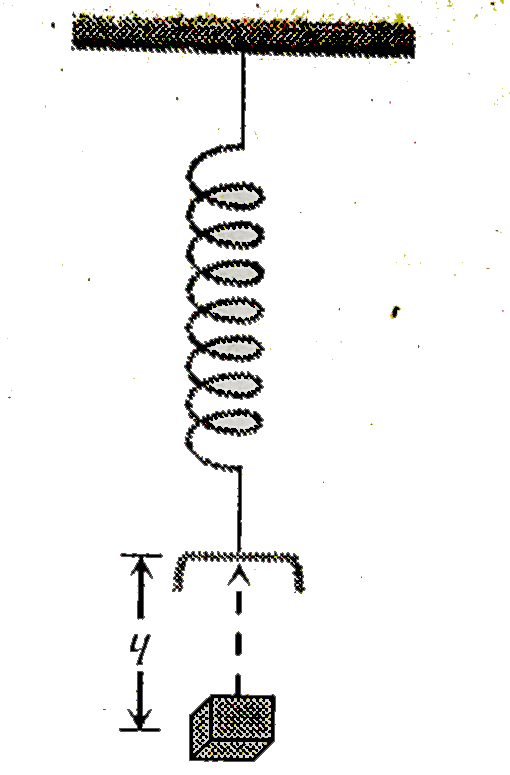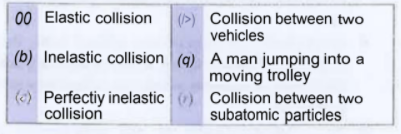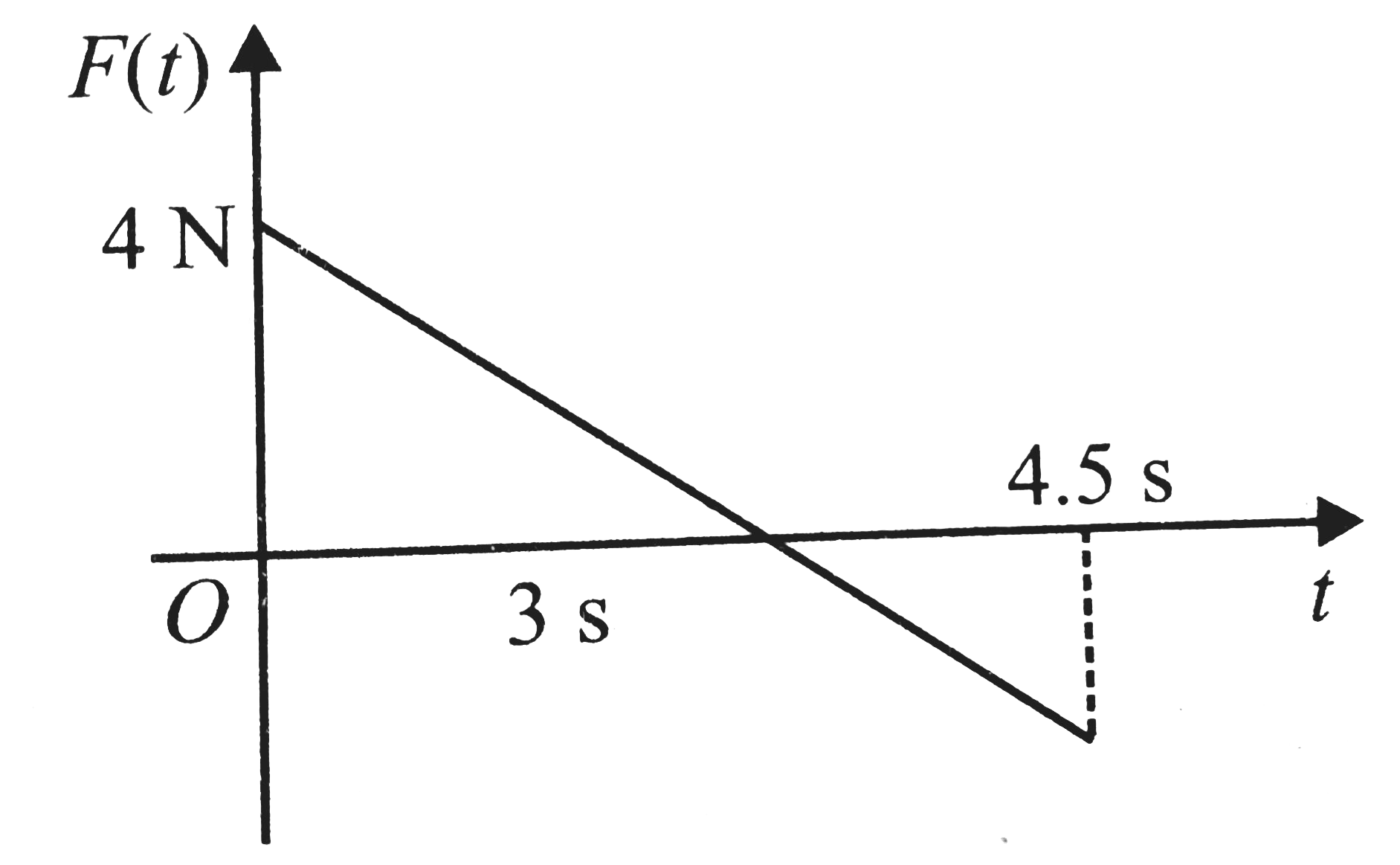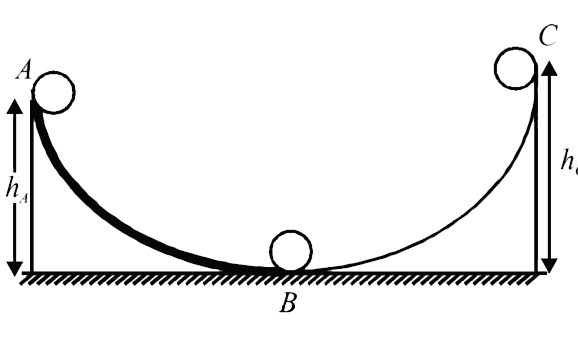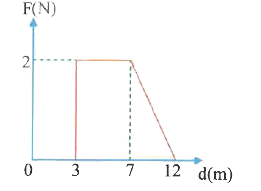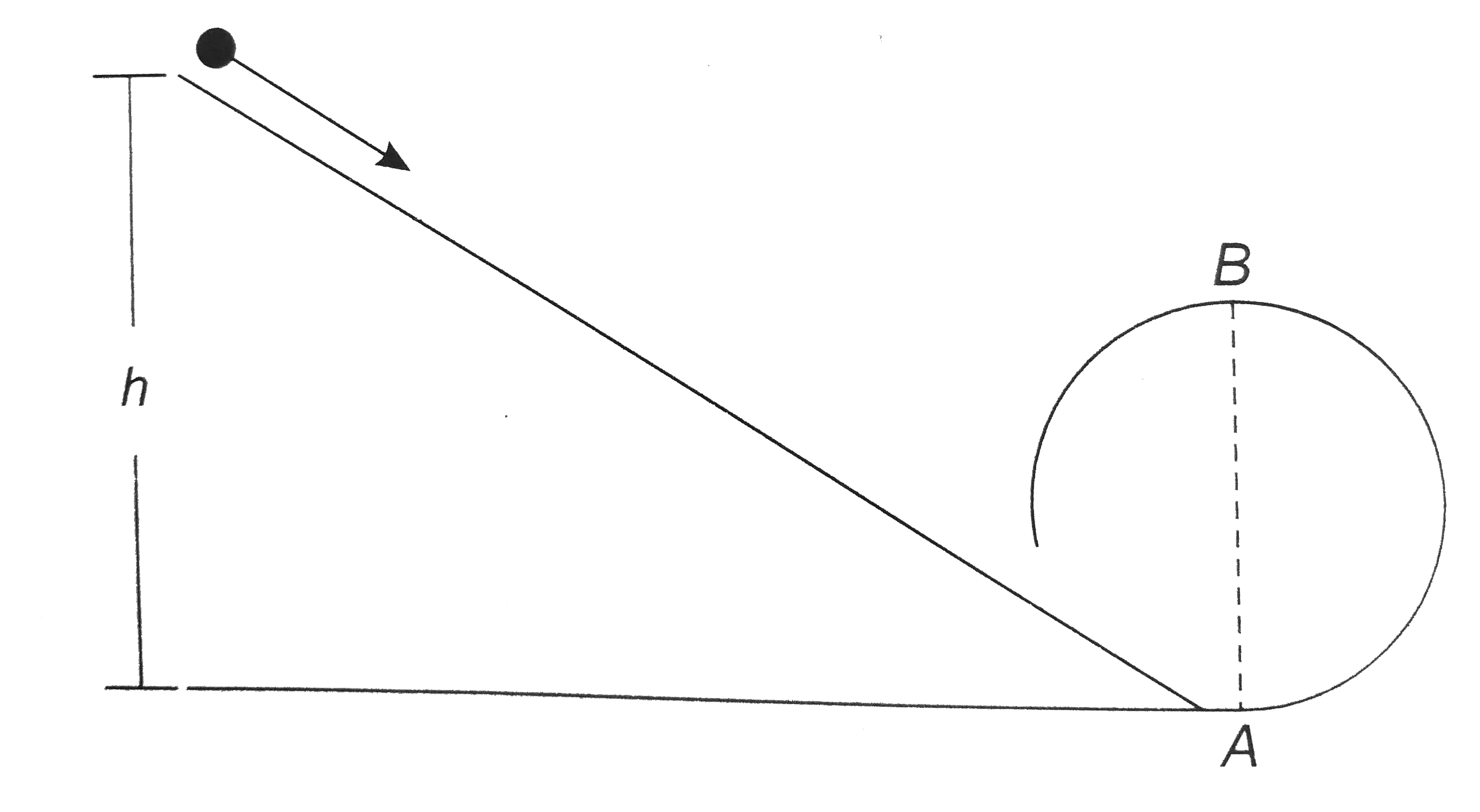EXERCISE from DHANPAT RAI & CO PHYSICS Chapter 28 Work, Energy and power for Class 11
| Class 11 | PHYSICS |
| Chapter | Work, Energy and power |
| DHANPAT RAI & CO PHYSICS | EXERCISE |
| Medium | English |
| Academic Year | 2023-2024 |
Question 6
A force →F=ˆi+5ˆj+7ˆk acts on a particle and displaces it throught →s=6ˆI+9ˆk. Calculate the work done if the force is in newton and displacement in metre.
(ii) Find the work done by force →F=2ˆi−3ˆj+ˆk when its point of application moves from the point A(1,2,-3) to the point B (2,0, -5).View SolutionQuestion 17
A body of mass 2kg is resting on rough horizontal surface. A force 20N is applied to it for 10s parallel to the surface. If coefficient of kinetic friction between the surfaces in contact in 0.2. Caluculate (i) work done by applied force in 10s. (ii) change in KE of object in 10s.
Take g=10m/s2View SolutionQuestion 18
A body of mass 2kg is resting on a rough horizontal surface. A force of 20N is now applied to it for 10s, parallel to the surface. If the coefficient of kinetic friction between the surfaces of contact is 0.2. Calculate
change in kinetic energy of the object in 10s. (Take g=10ms−2).View SolutionQuestion 40
A massless platform is kept on a light elastic spring as shown in figure. When a small stone of mass 0.1 kg is dropped on the pan from a height of 0.24 m, the spring compresses by 0.01m. From what height should the stone be droppped to cause a compression of 0.04m in the spring ?
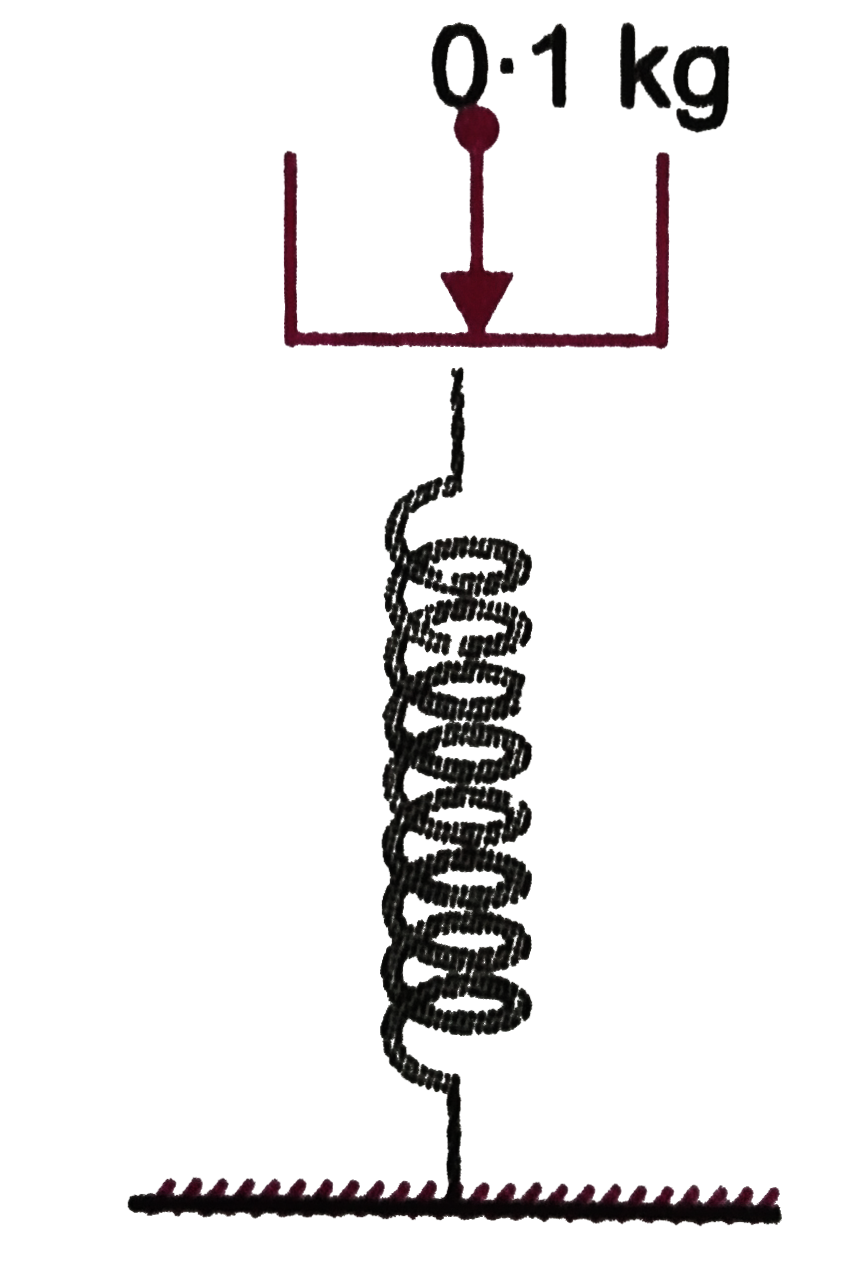 View Solution
View SolutionQuestion 267
A particle which is constant to move along the x−aξs , is subjected to a force in the same direction which varies with the distance x of the particle from the origin as F(x)=−Kx+ax3 . Hero K and a are positive constant . For x≥0, the fanctional from of the patential every U(x) of the particle is View SolutionQuestion 269
A block (B) is attached to two unstriched sprig S1 and S_(2) with spring constant K and 4K , respectively (see fig 1) The other ends are atteched in identical support M1 and M2 not attached in the walls . The springs and supports have negligible mass . There is no friction anywhere . The block B is displaced toword wall 1 by a small distance z (figure (ii)) and released . THe block return and moves a maximum displacements x and y are musured with reoact to the equalibrum of the block B and the ratio y/x is
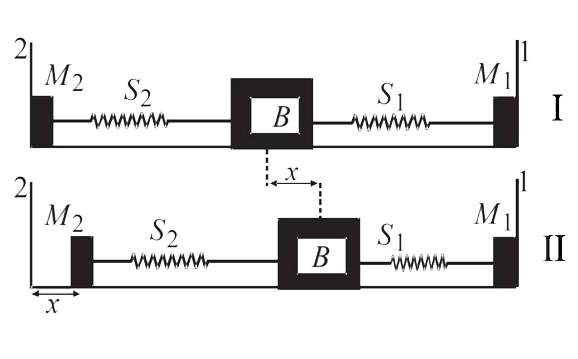 View Solution
View SolutionQuestion 270
Two small particles of equal masses stant moving in opposite direction from a point A in a burtizonetal circule orbic their tangention velocity are V and 2V , respectively as shown in the figure between collsions , the particals move with constant speed After making how many elastic collition , other the then that at A these two partical will again reach the point A ?
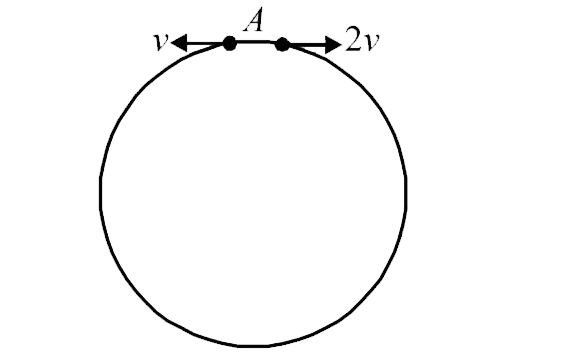 View Solution
View SolutionQuestion 271
A particle of mass m is projected from the ground with an initial speed u0 at an angle α with the horizontal. At the highest point of its trajectory, it makes a completely inelastic collision with another identical particle, which was thrown vertically upward from the ground with the same initial speed u0. The angle that the composite system makes with the horizontal immediately after the collision isView SolutionQuestion 273
A force F=−K(yˆi+xˆj) (where K is a positive constant) acts on a particle moving in the x-y plane. Starting from the origin, the particle is taken along the positive x-axis to the point (a,0), and then parallel to the y-axis to the point (a,a). The total work done by the force F on the particle isView SolutionQuestion 277
A tennis ball dropped on a barizoontal smooth surface , it because back to its original postion after hiting the surface the force on the bell during the collision is propertional to the length of compression of the bell . Which one of the following skethes desches discribe the variation of its kinetic energy K with time 1 mass apporiandly ? The figure as only illistrative and not to the scale . View SolutionQuestion 278
A particle of mass m is initially at rest at the origin. It is subjected to a force and starts moving along the x-axis. It kinetic energy K changes with time as dK/dt=γt, where γ is a positive constant of appropriate dimensions. Which of the following statement is (are) true?View SolutionQuestion 279
There object A,B and C are kept is a straing line a fritionlas horizental surface . These have masses have increase on 2m and m repectively . The object A move toward B with a speed 9 m//s and makes as electic collision with a there after B makes complately inclesis with C . All motion over on the same strangth line . Find the first speed of the object C
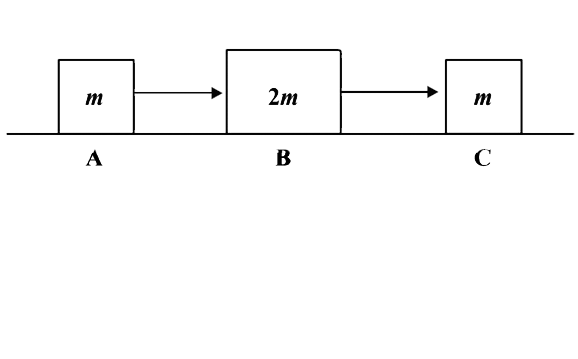 View Solution
View SolutionQuestion 280
A block of mass 0.18kg is attached to a spring of force-constant 2N/m. The coefficient of friction between the block and the floor is 0.1 Initially the block is at rest and the spring is un-stretched. An impulse is given to the block as shown in the figure. The block slides a distance of 0.06m and comes to rest for the first time. The initial velocity of the block in m//s is V=N/10. Then N is :
 .View Solution
.View SolutionQuestion 282
Constant as eliptical rail PQ in the varticle plain with OP==3m and OQ=4m . A block of mass 1 kg is pailed along the rail from P to Q with a force of 18N , which is always parallel to less PQ Assuming are frictionless losess , the kinetic energy the block when 0 reches Q is (n×10) pales . THe velie of a (Take acceleration due to gravity ) =10ms−2)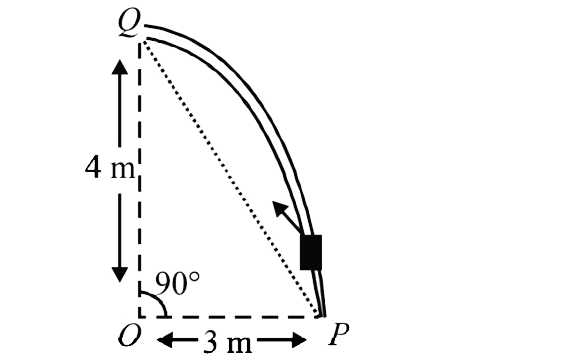 View Solution
View SolutionQuestion 283
A spring-block system is resting on a frictionless floor as shown in the figure. The spring constant is 2.0Nm−1 and the mass of the block is 2.0 kg. Ignore the mass of the spring. Initially the spring is in an unstretched condition. Another block of mass 1.0 kg moving with a speed of 2.0ms−1 collides elastically with the first block. The collision is such that the 2.0 kg block does not hit the wall. The distance, in metres, between the two blocks when the spring returns to its unstretched position for the first time after the collision is View Solution
View SolutionQuestion 284
A particle of unit mass is moving along the x-axis under the influence of a force and its total energy is conserved. Four possible forms of the potential energy of the particle are given in column-I (a and U0 are constants). Match the potential energies in column-I to the corresponding statement(s) in column-II.
(A)U1(x)=U02[1−(xa)2]2(P)the force acting on the particle is zero at x = a.(B)U2(x)=U02(xa)2(Q)the force acting on the particle is zero at x = 0.(C)U2(x)=U02(xa)2exp[−(xa)](R)the force acting on the particle is zero at x = 0.(D)U4(x)=U02[xa−13(xa)3](S)The particle experiences an attractive force towards x = 0 in the region | x | < a(T)The particle with total energyU04 can oscillate about the pointx=−a.View SolutionQuestion 294
A spherical ball of mass 20kg is stationary at the top of a hill of height 100m , it rolls down a smooth surface to the ground , then climbs up another bill of height of 30m and final rolls down to a horizontal base at a height of 20m about the ground . The velocity attained by the ball is View SolutionQuestion 307
A block of mass m=0.1kg is connceted to a spring of unknown spring constant k. It is compressed to a distance x from its equilibrium position and released from rest. After approaching half the distance (x2) from the euilibrium position, it hits another block and comes to rest momentarily, while the other block moves with velocity 3ms−1. The total initial energy of the spring is :View SolutionQuestion 310
A person trying to lose weight by burning fat lifts a mass of 10 kg upto a height of 1 m 1000 times. Assume that the potential energy lost each time he lowers the mass is dissipated. How much fat will he use up considering the work done only when the weight is lifted up? Fat supplies 3.8x107J of energy per kg which is converted to mechanical energy with a 20% efficiency rate. Take g=9.8ms–2 : View SolutionQuestion 312
In a collinear collision, a particle with an initial speed v0 strikes a stationary particle of the same mass. If the final total kinetic energy is 50% greater than the original kinetic energy, the magnitude of the relative velocity between the two particles, after collision, is:View SolutionQuestion 313
This question has statement 1 and statement 2 . Of the four choice given after the Statement , choose the one that best describe the two Statement .
If the spring S1and S2 of force constant k1 and k2 respectively , are streached by the same force , it is found that more work is done on spring S1 then on spring S2
Statement -1: If statement by the same answer work done on S1 work on S1 is more then S2
Statement - 2 : k1<k2View SolutionQuestion 314
This question has statement I and statement II. Of the four choices given after the statements, choose the one that best describes the two statements.
Statement I: A point particle of mass m moving with speed v collides with stationary point particle of mass M. If the maximum energy loss possible glven as f(12mv2) then f=(mM+m)
Statement II: Maximum energy loss occurs when the particles get stuck together as a result of the collision. View SolutionQuestion 330
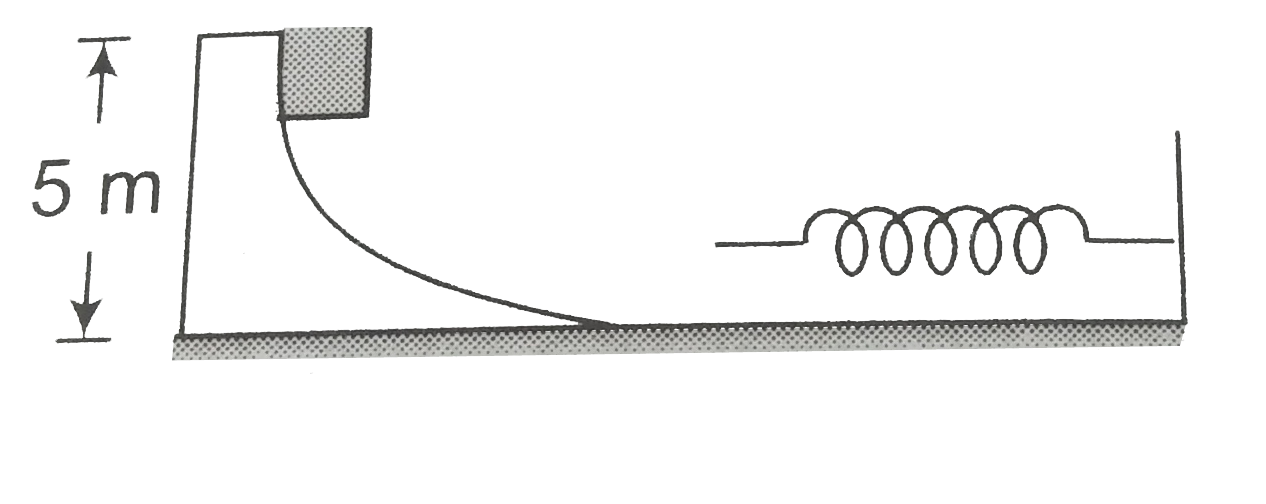
The figure shows a smooth curved track terminating in a smooth horizontal part. A spring of spring constant 400(N)/(m) is attached at one end to a wedge fixed rigidly with the horizontal part . A 40 g mass is released from rest at a height of 5 m on the curved track. The maximum compression of the spring will be View SolutionQuestion 339
A ball is bouncing down a set of stairs. The coefficient of restitution is e. The height of each step is d and the ball bounces one step at each bounce. After each bounce the ball rebounds to a height h above the next lower step. Neglect width of each step in comparison to h and assume the impacts to be effectively head on. Which of the following relation is correct ?View SolutionQuestion 349
In the following questions, a statement of assertion is followed by a statement of reason. Mark the correct choice as
(a) If both assertion and reason are true and reason is the correct explanation of assertion.
(b) If both assertion and reason are true but reason is not the correct explanation of assertion.
(c ) If assertion is true but reason is false.
(d) If assertion and reason are false.
Q. Assertion: Stress is the internal force per unit area of a body.
Reason: Rubber is more elastic than steel:View SolutionQuestion 353
Statement I. A particle strikes head-on with another stationary particle such that the first particle comes to rest after collision. The collision should necessarily be elastic.
Statement II: In elastic collision, there is no loss of momentum of the system of the particles. View SolutionQuestion 407
On a friction surface a block a mass M moving at speed v collides elastic with another block of same mass M which is initially at rest . After collision the first block moves at an angle θ to its initial direction and has a speed v3. The second block's speed after the collision isView SolutionQuestion 412
A bullet of mass 10 g moving horizontally with a velocity of 400ms−1 strikes a wooden block of mass 2kg which is suspended by a light inextensible string of length 5 m. As a result, the centre of gravity of the block is found to rise a vertical distance of 10 cm. The speed of the bullet after it emerges out horizontally from the block will be View Solution
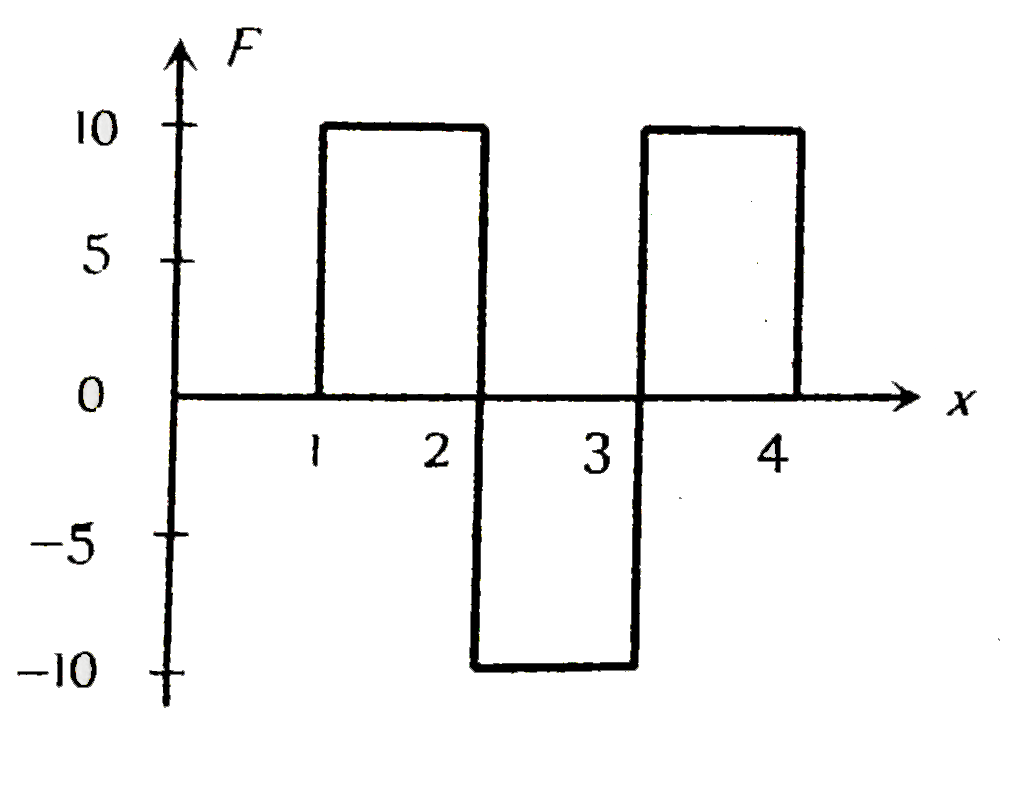

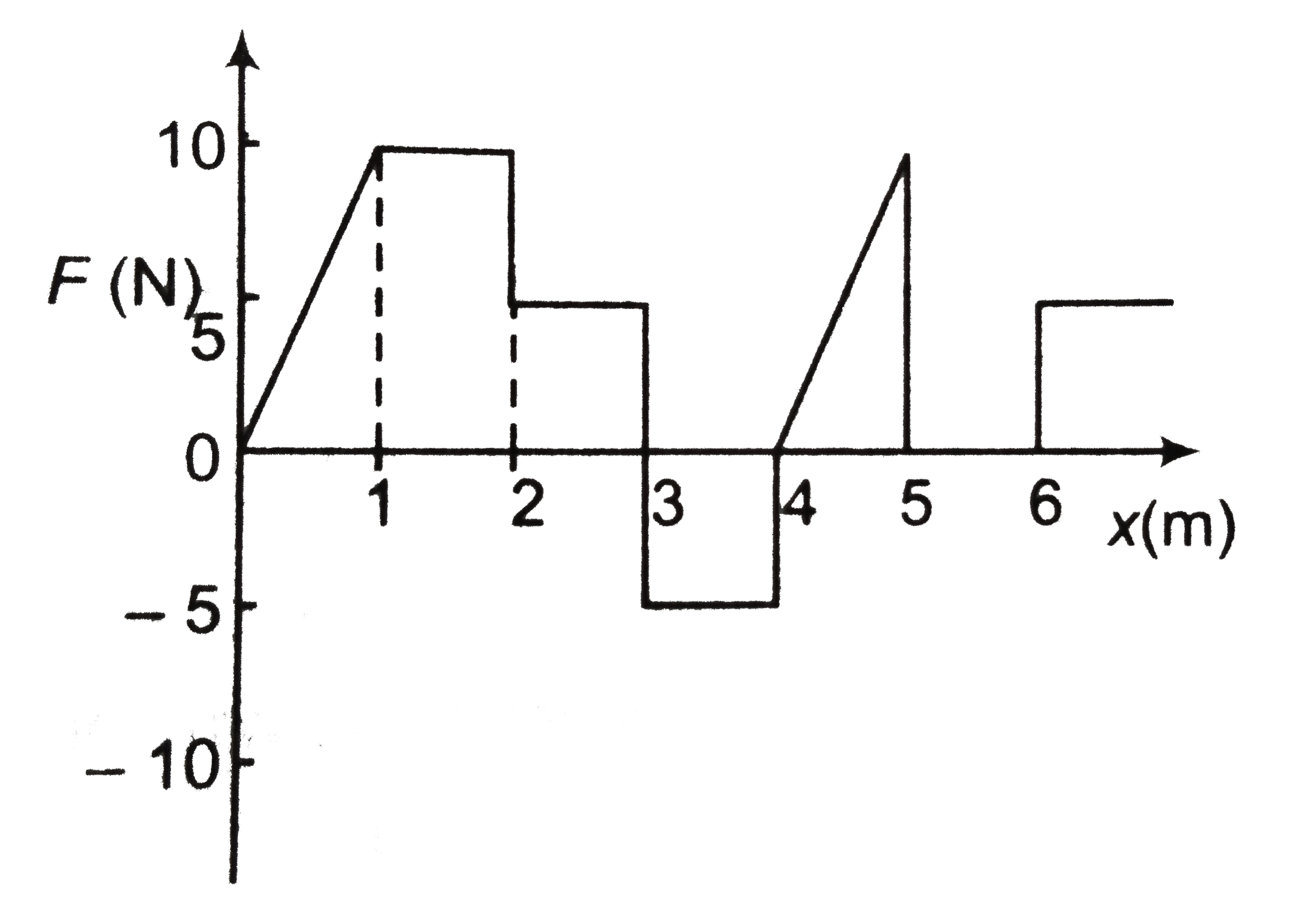 .
. 